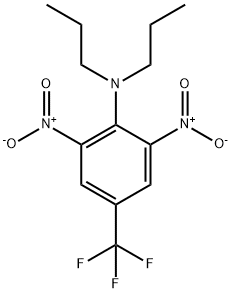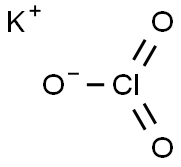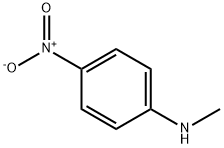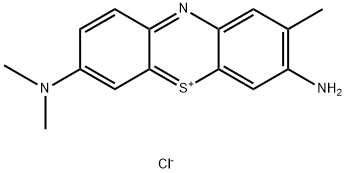TrifluralininHexane , 1000μg/mLinHexane , 1582-09-8
Synonym(s):
2,6-Dinitro-N,N-dipropyl-4-trifluoromethylaniline
CAS NO.:1582-09-8
Empirical Formula: C13H16F3N3O4
Molecular Weight: 335.28
MDL number: MFCD00055241
EINECS: 216-428-8
| Pack Size | Price | Stock | Quantity |
| 1.2ml | RMB199.20 | In Stock |
|
| others | Enquire |
PRODUCT Properties
| Melting point: | 48.5°C |
| Boiling point: | 139°C |
| Density | 1.294 |
| vapor pressure | 1.97 at 30 °C (effusion method, DePablo, 1976) |
| Flash point: | 100 °C |
| storage temp. | APPROX 4°C |
| solubility | DMSO : ≥ 100 mg/mL (298.26 mM);Water : < 0.1 mg/mL (insoluble) |
| pka | -1.45±0.50(Predicted) |
| form | Crystalline Solid |
| color | Bright orange |
| Water Solubility | <0.01 g/100 mL at 22.5 ºC |
| Merck | 13,9757 |
| BRN | 1893555 |
| Henry's Law Constant | 10.19 and 14.89 in distilled water and 33.3‰ NaCl at 20 °C, respectively (wetted-wall column,
Rice et al., 1997a) |
| LogP | 5.340 |
| CAS DataBase Reference | 1582-09-8(CAS DataBase Reference) |
| IARC | 3 (Vol. 53) 1991 |
| NIST Chemistry Reference | Trifluralin(1582-09-8) |
| EPA Substance Registry System | Trifluralin (1582-09-8) |
Description and Uses
Trifluralin is a dinitroaniline herbicide that is approved for preemergence use to control broadleaf weeds in a variety of crops and plants. First approved nearly 50 years ago, trifluralin is a common commercially available herbicide which is used extensively in the United States and other countries. In the early 2000s, trifluralin was banned in Europe following reports of persistence in soil and groundwater leading to concerns of increased risk for toxicity. In general, trifluralin is viewed as a safe herbicide when used according to the instructions. Minimal to no toxicity has been reported in humans following either oral, dermal, or inhalation exposure. There is some evidence that once trifluralin enters the soil and groundwater, it undergoes a complex and extensive series of metabolic steps and can exist as multiple intermediaries depending on the extent of the degradation. This has led to findings that trifluralin may have elevated toxicity in certain aquatic wildlife as particular species of fish and tadpoles have displayed biomarkers of trifluralin toxicity following exposure. Larger vertebrates such as canines have also demonstrated toxicological profiles suggesting an elevated toxicity compared to humans.
Preemergence herbicide for controlling many grasses and broad-leaved weeds.
Safety
| Symbol(GHS) |    GHS07,GHS08,GHS09 |
| Signal word | Warning |
| Hazard statements | H302-H317-H351-H410 |
| Precautionary statements | P202-P273-P280-P301+P312-P302+P352-P308+P313 |
| Hazard Codes | Xi;N,N,Xi,Xn,F |
| Risk Statements | 36-43-50/53-20/21/22-11-40 |
| Safety Statements | 2-24-37-60-61-36-26-16-46-36/37 |
| RIDADR | UN 2588 |
| WGK Germany | 2 |
| RTECS | XU9275000 |
| HazardClass | 9 |
| PackingGroup | III |
| HS Code | 29214300 |
| Hazardous Substances Data | 1582-09-8(Hazardous Substances Data) |
| Toxicity | LD50 orally in rats: 500 mg/kg (Goldenthal) |





